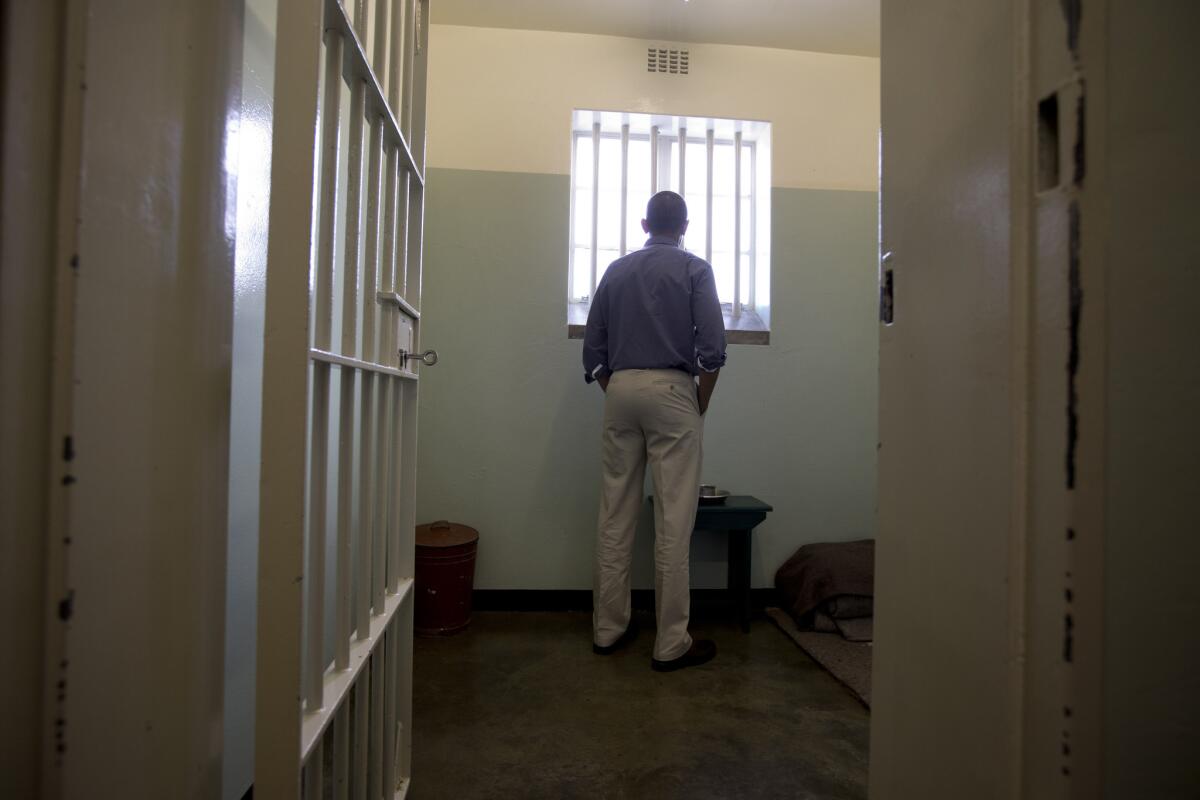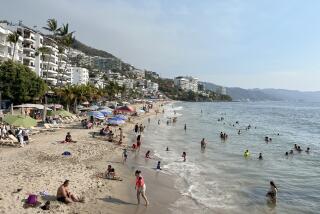Obama visits Robben Island, where Nelson Mandela was imprisoned

CAPE TOWN, South Africa -- President Obama walked in the steps of Nelson Mandela on Sunday as he visited the lime quarry where the civil rights icon once hunched in backbreaking work and the spare cell where he spent 18 years confined for fighting apartheid.
Obama’s tour of the prison at Robben Island was something of a symbolic union between the first African American president of the United States and the first black president of South Africa. The long-distance tribute would have to stand for a face-to-face meeting during Obama’s tour of Africa, as Mandela, 94, remained hospitalized in critical condition in Pretoria.
Obama first went to the site in 2006 as a young U.S. senator touring the continent where his father was born. He returned just seven years later as a gray-haired president with an entourage of security, prying media and his family: First Lady Michelle Obama, daughters Sasha and Malia, mother-in-law Marian Robinson and niece Leslie Robinson.
The group was led through the tour by former prisoner Ahmed Kathrada, among the 33 anti-apartheid leaders imprisoned with Mandela. Kathrada, Mandela and other prisoners spent hours toiling in the bleak quarry, under the eye of a watchtower, eating lunch and using a bucket for a toilet in the same cave.
“Is it a reminder of how long you were here?” Obama asked Kathrada of his return visit as they stood near a pile of rocks.
In all, Mandela spent 27 years in prison after being convicted of trying to overthrow the South African government. He was moved from Robben Island in 1982 and spent the remainder of his imprisonment on the mainland until February 1990, when he walked out of prison a graying, thin, wrinkled version of the man who went in. Four years later was elected president.
Obama calls Mandela a personal hero and often describes his involvement with an anti-apartheid group at Occidental College as his first brush with political activism and oratory. On Sunday the president schooled his daughters in some of the history he says inspired him.
“One thing you guys might not be aware of is that the idea of political nonviolence first took root here in South Africa because Mahatma Gandhi was a lawyer here in South Africa,” Obama told his daughters at the quarry. “Here is where he did his first political [activism]. When he went back to India the principles ultimately led to Indian independence, and what Gandhi did inspired Martin Luther King.”
From the quarry, the Obamas toured the cellblock where Mandela and other prisoners slept, the courtyard where Mandela hid the manuscript of his autobiography, and the cell where Mandela slept on a thin mat on the cement floor. The president paused in the cell while photographers snapped photos, gazing at the mat and then out the window at the blue sky.
Obama had once been expected to visit Mandela during this long-awaited first tour of Africa during his presidency. Such a meeting would have been the first between the two since a brief visit in 2005. But with the world bracing for Mandela’s death, Obama’s trip has been overshadowed by Mandela’s illness, speculation about his condition and disputes among his family.
Instead of a visit to Mandela, Obama made a phone call to Mandela’s wife, Graca Machel, on Saturday and met with other family members, with the president offering support for the anguished relatives.
On Sunday, Obama offered his gratitude to all the prisoners of Robben Island. In the guest book, he wrote:
“On behalf of our family we’re deeply humbled to stand where men of such courage faced down injustice and refused to yield. The world is grateful for the heroes of Robben Island, who remind us that no shackles or cells can match the strength of the human spirit. Barack Obama and Michelle Obama 30 June 2013.”
ALSO:
Throngs rally to denounce Egypt’s president
Chinese crack down on violence in Uighur region
New Iranian president vows to pursue moderate course
More to Read
Sign up for Essential California
The most important California stories and recommendations in your inbox every morning.
You may occasionally receive promotional content from the Los Angeles Times.











